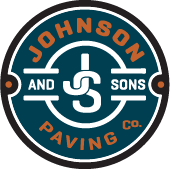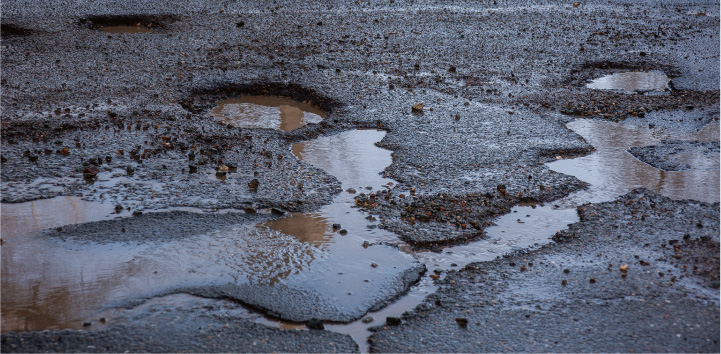
Potholes – A Brief History
The term “pothole” has been around for a long time, dating all the way back to the 15th and 16th centuries! During this period, potters would dig holes in roads after a rainstorm to find clay for their wares. This would leave larger holes in the road that wagons or carriages would hit while in transit. People referred to these holes as “potholes” since they were holes created by potters. Even though we do not have potters in the streets digging up asphalt to find clay today, we do have rough Wisconsin winters which can create potholes and wreak havoc on our streets and parking lots.
How Potholes Are Formed
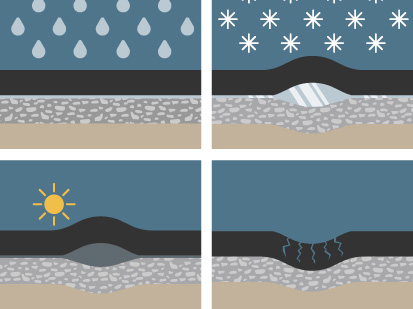
Understanding the Hazards of Potholes
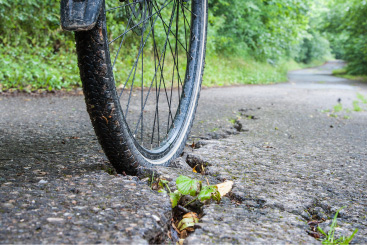
Curb Appeal & Liability
Once you notice a pothole, it is important to repair it as soon as possible. If left unaddressed, it will continue to grow based on the weather conditions and traffic volume. This creates a dangerous hazard for vehicles, bikes, and pedestrians, but they also hurt your property value and increase your liability for personal or property damage. If you own a commercial parking lot, customers and clients are more likely to judge your business based on how your parking lot looks. If they happen to damage their car or get injured, you’ve not only lost a customer or tenant, but you may also be facing financial restitution, leading to increased insurance rates. The benefits of curb appeal go beyond aesthetics, helping pedestrians and customers feel safe while driving or walking through a commercial area.

The Johnson and Sons Solution for Potholes
Asphalt patching addresses localized areas of wear and tear on expansive asphalt surfaces such as parking lots. Common issues like surface webbing and minor cracks can be fixed by removing, refilling, and compacting the asphalt pavement using one of these three cost-effective methods.
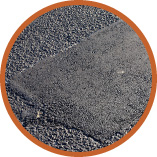
We start by saw-cutting and removing the current asphalt, then we compact the base stone before either repatching or repaving the asphalt to seamlessly blend with the surrounding pavement.
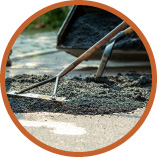
Infrared
Instead of cutting and removing the damaged asphalt like general patching, our team reheats the existing asphalt, rakes it out, adds fresh asphalt as required, and then compacts the refreshed area. This results in a smooth, joint-free repair.
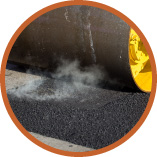
Tack and Patch
For a tack and patch repair, we begin by cleaning the worn-down area. After the area is thoroughly cleansed, we apply a tack coat patch using hot mix asphalt. A tack coat helps the top layer adhere to the lower layer. Lastly, we compact the surface to ensure smoothness.
How We Prevent Potholes
While we offer solutions to effectively repair potholes, we also actively work to prevent them from happening when we lay fresh asphalt for any project. Sealcoating and crack filling help maintain the integrity of asphalt surfaces and minimize the risk of pothole formation.
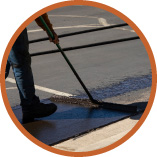
Sealcoating
Sealcoating protects asphalt pavement from outdoor elements like sunlight, ice, salt, and oils/chemicals. This is the best way to extend the lifespan of any pavement and make the most of your investment. Sealcoating acts like a shield, protecting your pavement while providing a fresh, smooth black look. To maintain the health of your pavement, we recommend sealcoating every 2 to 3 years. Not only will this prolong the life of your pavement but it can also reduce repair expenses and delay the need for future replacement.
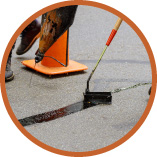
Crack filling
Similar to patching, crack filling addresses the cracks in asphalt pavement, but it’s not as localized and can cover the entire surface. We recommend performing crack filling every 1 to 2 years to avoid more expensive repairs or replacements later on. We recommend sealcoating after crack filling to strengthen the filled cracks and provide a seamless finish to the area.
Johnson and Sons Paving can repair any pothole you have. Contact us today for a free, no-obligation quote where we will inspect your pavement and provide paving options that fit your budget and your needs. While potholes have been pestering us since the 15th century, we have the equipment, in-house asphalt mix, and skilled crews to fix and prevent them! Contact us to get started!
